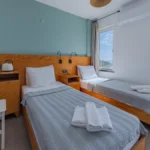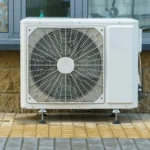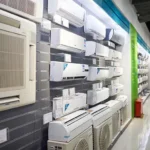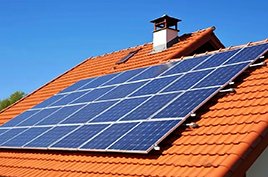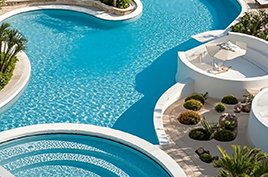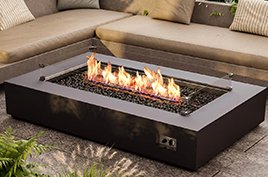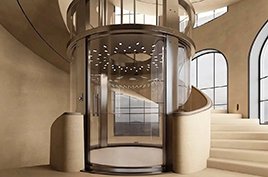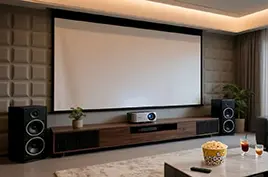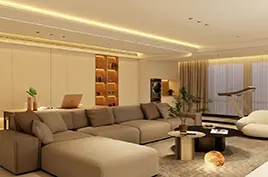Central air conditioning first became popular in industrial installations. After entering the home decoration market, it took off like crazy, spreading across the market fast.
Why did this happen? What are the advantages of installing central air conditioning compared to conventional air conditioners? This article will provide detailed and unified answers to all your questions about central air conditioning.
Basic Types of Air Conditioning – Splits, Multi-Splits & Ducted Units
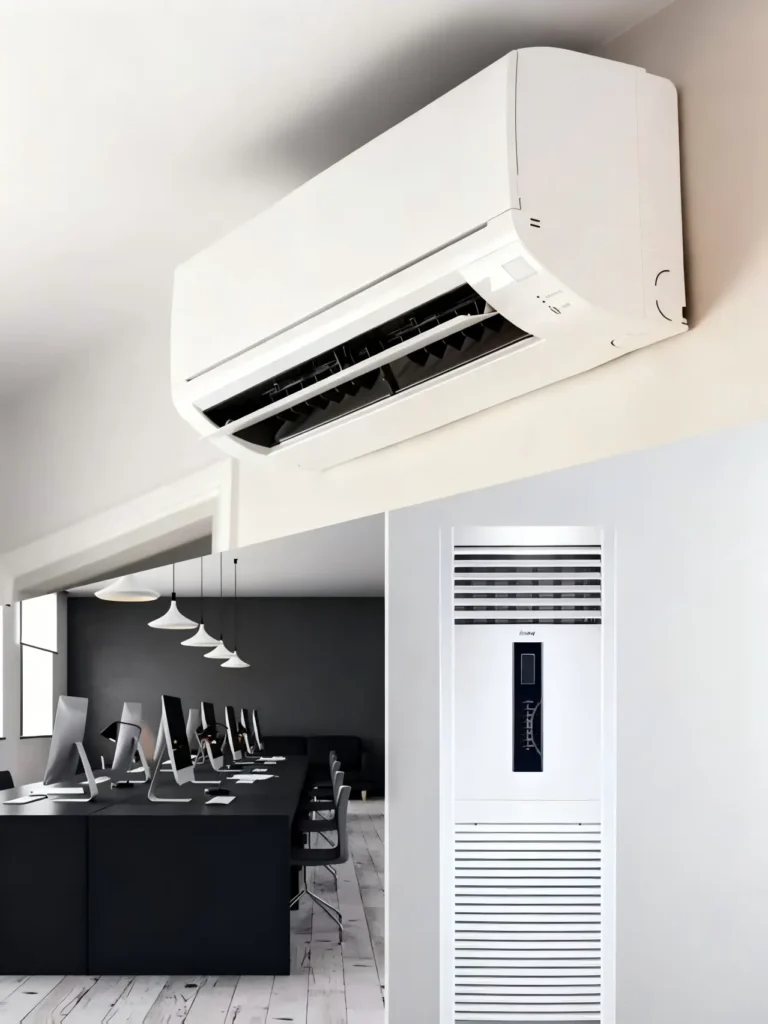
Split Units – Wall-Mounted & Floor-Standing Options
Split units are common air conditioners, available in wall-mounted style and floor-standing style. Each indoor unit in a room corresponds to an outdoor unit on the building’s exterior wall. For multiple rooms and each requires split ac unit, multiple outdoor units will be mounted on the exterior wall.
Multi-Split Units – Central Air Conditioning Systems
Multi-split units are what we call central air conditioners. One outdoor unit can connect to multiple indoor units. One outdoor unit connected to two indoor units is called “one-to-two”. one outdoor unit connected to several indoor units is called “one-to-n”, and so on.
Compared to multi-split units, split units are generally simpler and less expensive. However, they take up more space on the building’s exterior wall, which affects aesthetics and generates more noise. Generally speaking, for same indoor cooling capacity and same number of indoor units, a multi-split system usually costs more.
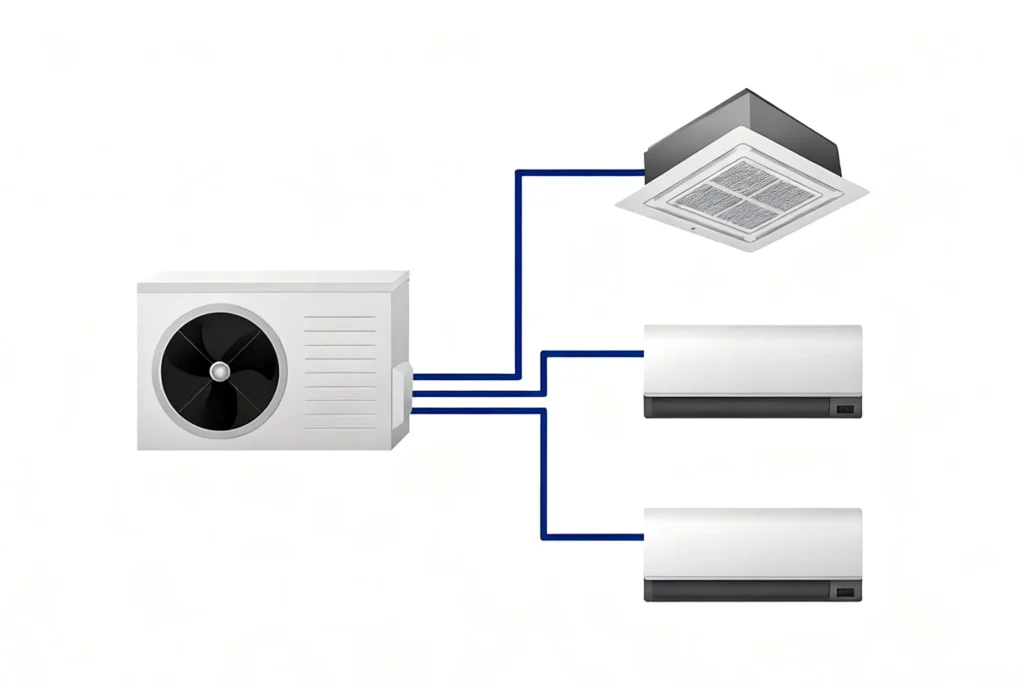
Ducted Units – Quiet & Space Saving Solutions
Ducted air conditioners are a midpoint between split and multi-split systems. It can also be considered a “one-to-one” system, but cheaper than central air conditioners.
Ducted units usually have both air outlet and return air vent. Therefore, they have more gentle wind flow, and quieter noise level than wall-mounted units.
Ducted units are also hided within the ceiling. It not only save space, but also aesthetic, and can perfectly match different decoration styles.
For larger spaces like living rooms or master bedrooms, if budget is limited, a ducted unit is a good option. Second bedrooms and smaller rooms can opt for a wall-mounted unit. Of course, if budget is sufficient, a multi-split central air conditioner for the entire house is the best option.
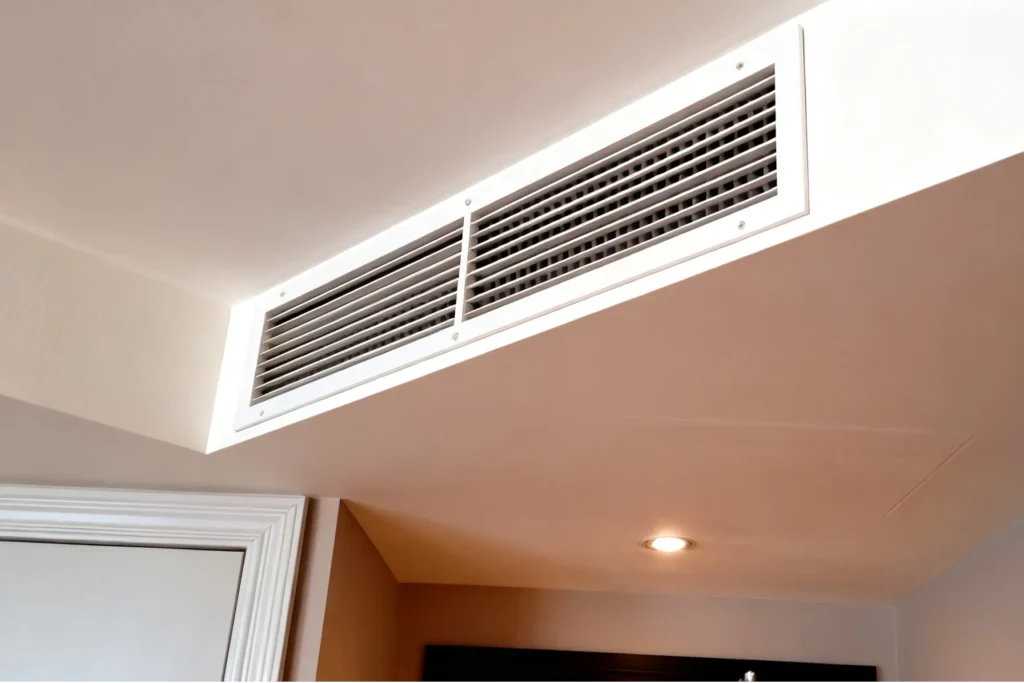
Fixed-Frequency Air conditioners vs Inverter Air Conditioners
Compressor
Before discussing fixed-frequency and inverter air conditioners, It is inevitable to talk about ac compressor. The compressor is the heart of the air conditioner. It is typically located in the outdoor unit. The operation of the compressor transports refrigerant to various key components of the air conditioner, thus allowing the air conditioner to operate.
Compressors are generally classified into five categories: piston compressor, rotary compressor, turbine compressor, screw compressor, and centrifugal compressor. The most common air conditioner compressors on the market are primarily the first three. For the same brand and power rating, the price: turbine compressor > rotary compressor > piston compressor.
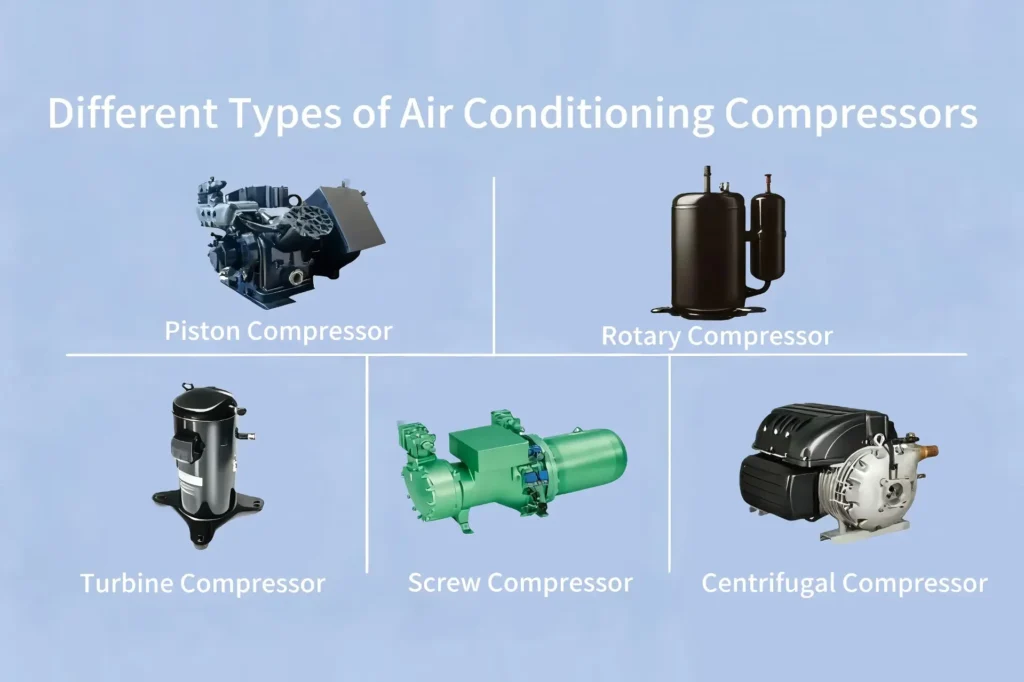
The lifespan of an air conditioner compressor is generally 10 years. Beyond this lifespan, the compressor may experience problems such as loud noise, increased power consumption, and slower cooling and heating speeds.
The key difference between fixed-frequency and inverter air conditioners lies in the compressor speed. Fixed-frequency air conditioners use a fixed-frequency compressor. The compressor will stop operate when the indoor temperature reaches the set point. Inverter air conditioners incorporate an inverter into the compressor. It has a variable speed that can be adjusted based on the indoor temperature. Even after reaching the set point, the compressor continues to run at a low speed to maintain a stable temperature.
The difference between fixed-frequency and inverter air conditioners
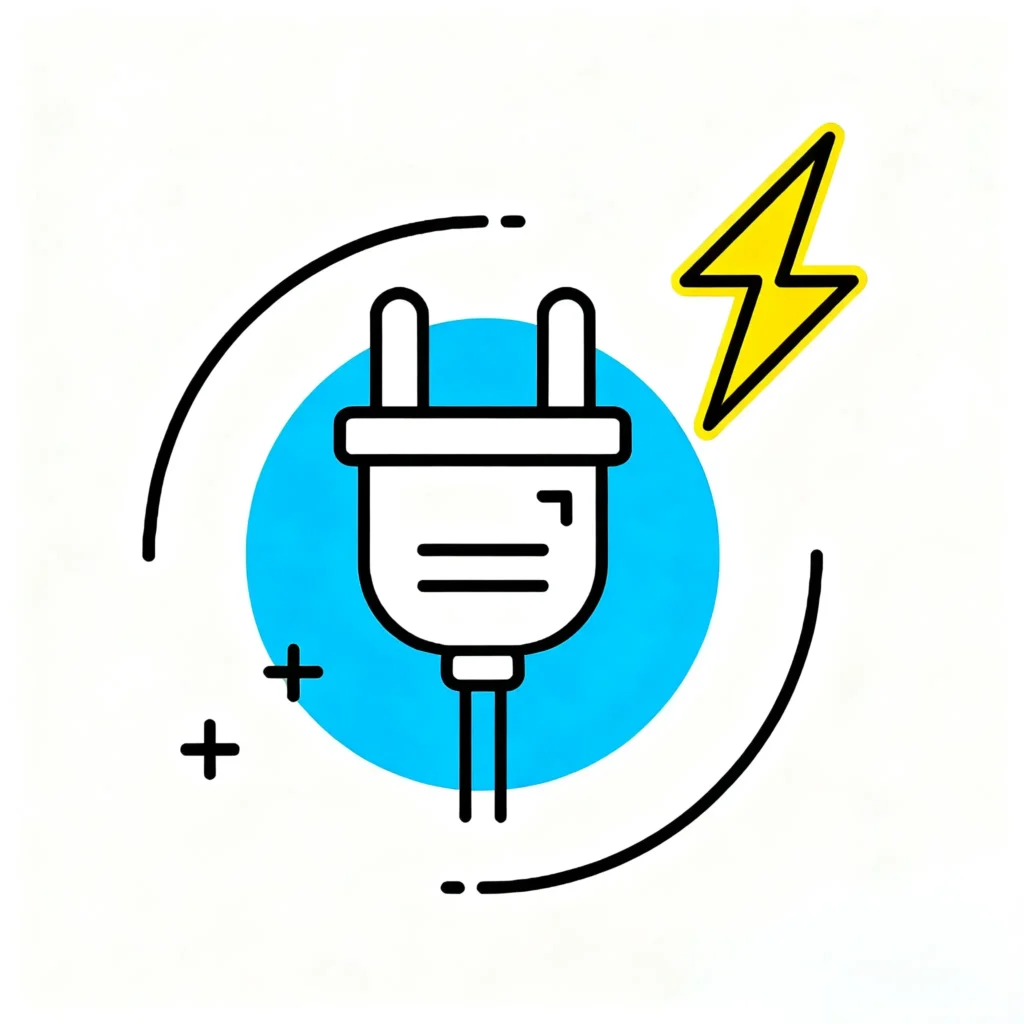
Energy consumption
Technically, inverter air conditioners generally consume less energy than fixed-frequency air conditioners. This is because the compressor speed of an inverter air conditioner slows down as the room temperature drops, while the compressor of a standard air conditioner continues to run at maximum speed.
However, this typically occurs when the air conditioner is used continuously for long periods. If the air conditioner is used for short periods, the energy consumption difference between fixed-frequency and inverter air conditioners is minimal. In fact, due to the more complex circuitry, inverter air conditioners may even consume more power.
When the air conditioner is first turned on, a fixed-frequency air conditioner generates a transient current that is 3-7 times greater than the compressor’s normal operating current. Therefore, frequently turning a fixed-frequency air conditioner on and off can significantly consume power. However, when turn on an inverter air conditioner, the speed of the compressor is increased smoothly by the inverter, thus can avoid high current surges. The starting current of inverter air conditioners is only about 1.2 times the rated current. For this reason, an inverter air conditioner is a better choice for home air conditioners that need to be frequently turned on and off.

Noise
Fixed-frequency air conditioners are generally noisier, while inverter air conditioners operate more smoothly and are virtually silent. Therefore, those who are sensitive to noise may choose an inverter air conditioner.

Cost
Inverter air conditioners are generally more expensive due to their more complex technology and circuitry. However, from a long-term perspective, they may be more cost-effective.
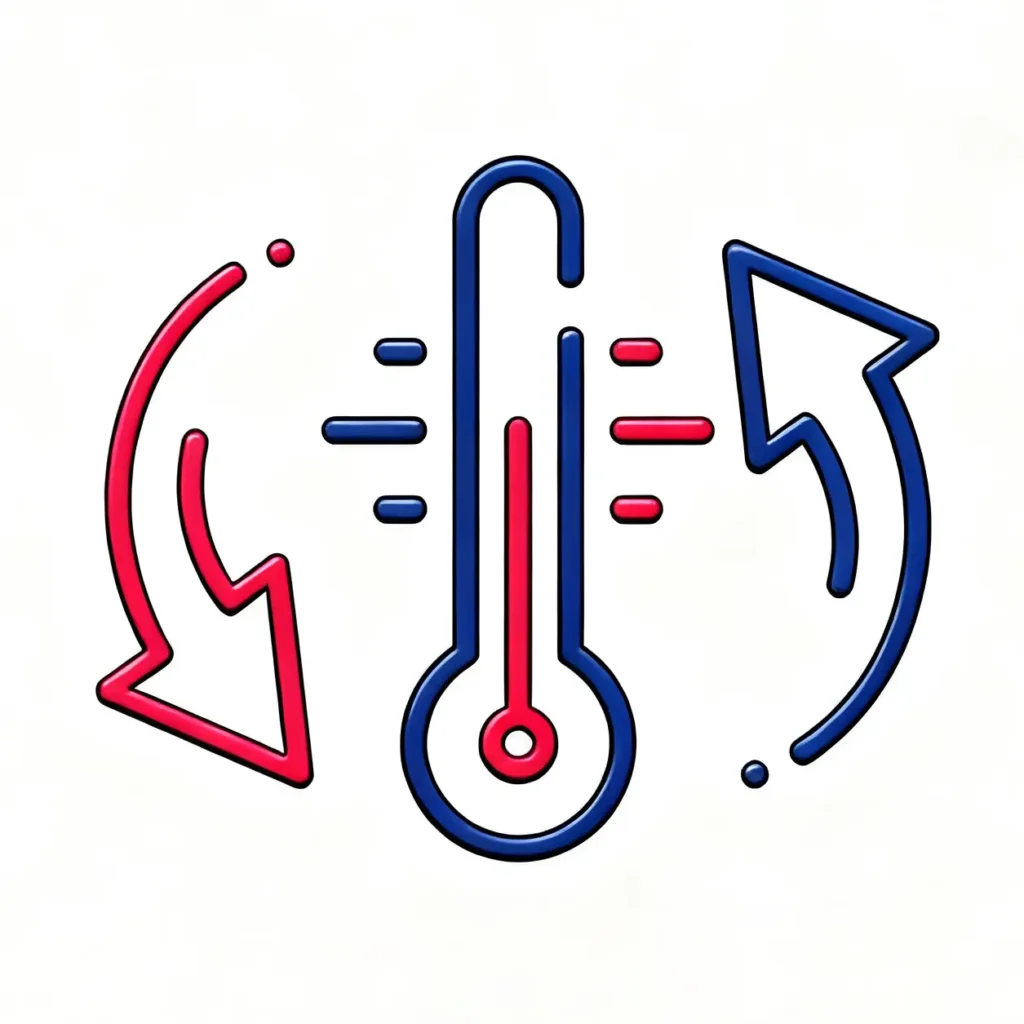
Temperature Control and Comfort
Inverter air conditioners produce smaller temperature fluctuations, maintaining a constant room temperature for extended periods, and providing a better sense of comfort. Fixed-frequency air conditioners experience larger temperature fluctuations, resulting in fluctuating temperatures and a lower level of comfort.
How to Choose a Central Air Conditioner
1. Choose the Most Suitable Air Conditioner Type
Based on your overall budget, choose a split unit, a multi-split unit, a ducted unit, or a combination of these. If your budget is limited and you don’t mind the exterior wall space occupied, you can opt for split units. The general purchase rule for split units is: bedrooms prefer wall-mounted units, and living rooms prefer floor-standing units. For higher budget, you can combine a split unit with a ducted unit. Choose wall-mounted units in bedrooms and ducted units in large, open areas like living rooms. For the best air conditioning experience and a sufficient budget, a multi-split unit would be the best.
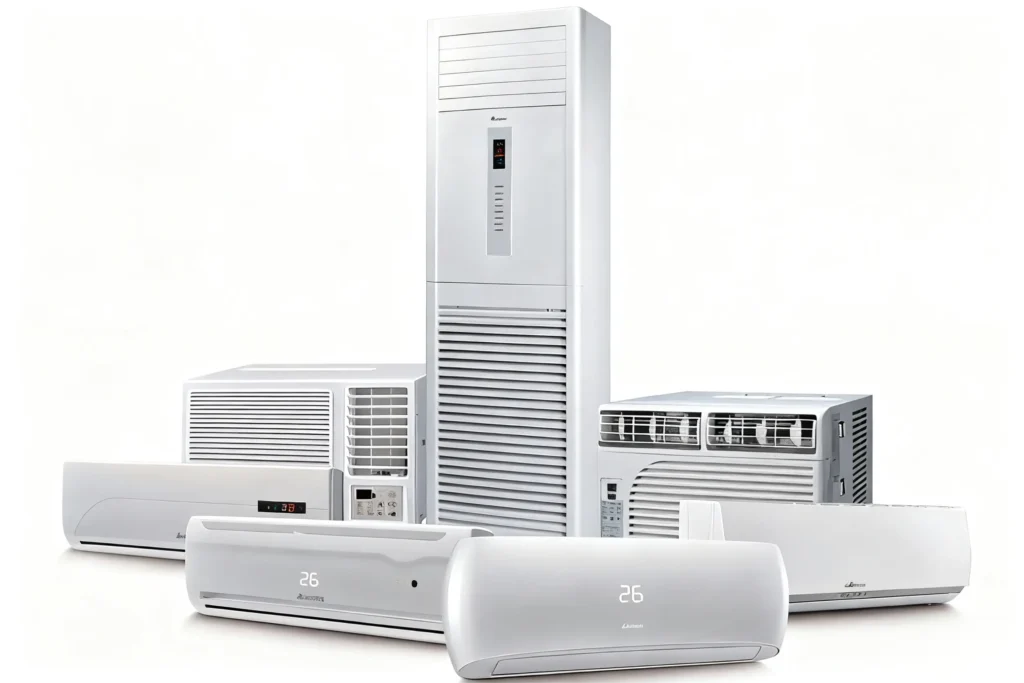
2. Choose the Air Conditioner Capacity (Cooling Capacity)
| AC Unit Size (HP) | Cooling Capacity (W) | Suitable Cooling Area (㎡) | Heating Capacity – Fixed Frq (W) | Heating Capacity – Inverter (W) | Suitable Heating Area (㎡) |
|---|---|---|---|---|---|
| 1 HP | ~2,500 W | 10 – 15 ㎡ | ~2,800 W | 2,500 – 3,200 W | 10 – 15 ㎡ |
| 1.25 HP (Large 1) | ~3,200 W | 15 – 20 ㎡ | ~3,500 W | 3,200 – 4,000 W | 15 – 20 ㎡ |
| 1.5 HP | ~3,500 W | 16 – 23 ㎡ | ~3,800 W | 3,500 – 4,500 W | 16 – 23 ㎡ |
| 2 HP | ~5,000 W | 23 – 34 ㎡ | ~5,400 W | 5,000 – 6,000 W | 23 – 34 ㎡ |
| 3 HP | ~7,200 W | 34 – 50 ㎡ | ~7,800 W | 7,200 – 8,500 W | 34 – 50 ㎡ |
The cooling capacity of an air conditioner is related to its rating. Choose the rating appropriate for the area of your space. If the price difference is small, opting for a higher rating may result in better performance.
3. Energy Efficiency
| Energy Efficiency Class | APF Value Range (Approx.) | Features & Performance | Recommended Usage |
|---|---|---|---|
| Class 1 (High Efficiency) | ≥ 4.5 | Advanced technology, full components (heat exchanger, electronic expansion valve, high-efficiency fans). Saves the most energy, stable performance, long-term cost savings. | Strongly recommended for all households and businesses |
| Class 2 (Medium Efficiency) | 3.5 – 4.49 | Decent efficiency, includes most essential components, moderate energy savings. | Acceptable if budget is limited |
| Class 3 (Low Efficiency) | < 3.5 | Often omits key parts (heat exchanger, expansion valve, fans). Lower upfront cost but high power consumption and poor long-term performance. | Not recommended; higher operating costs |
Energy efficiency of a central air conditioner is expressed as the Active Power Factor (APF). A higher APF value means more energy savings. When purchasing, prioritize units with the latest Class 1 energy efficiency rating. New Class 3 energy efficiency central air conditioners may appear cheaper, but they often omit features like heat exchangers, electronic expansion valves, and fans. This results in significantly higher energy consumption and poorer performance, ultimately outweighing the benefits.
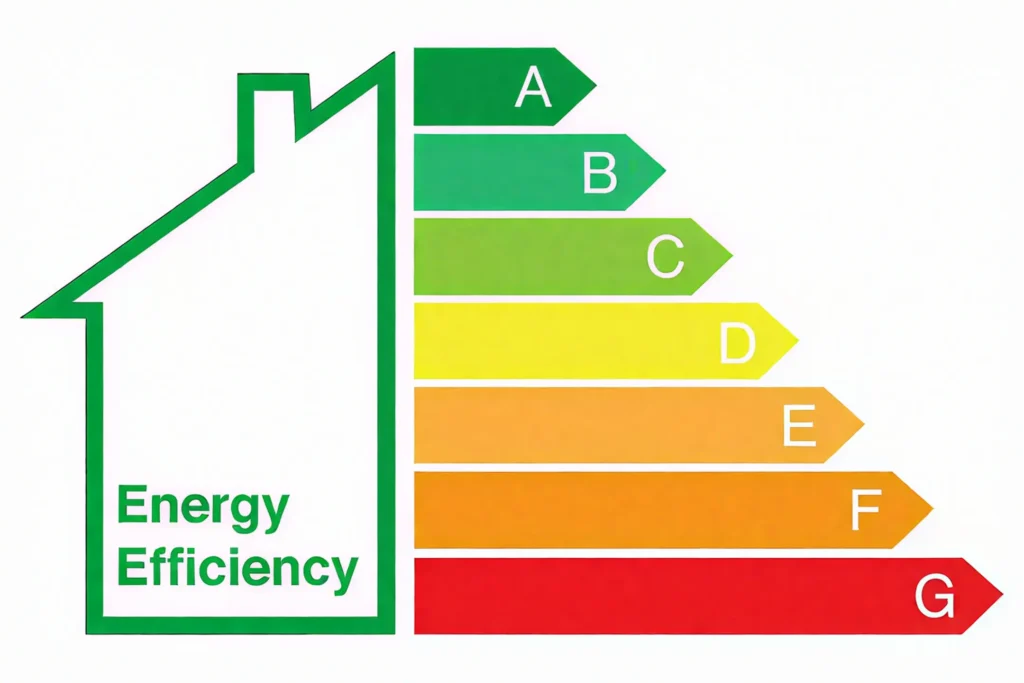
4. Choose Compressors
Currently, the major brands of home air conditioner compressors include: CMCC, Gree Landa, Highly, Sanyo, TCL Ruizhi, Mitsubishi Electric, Panasonic, Daikin, Hitachi, Samsung, and LG. We have cooperation with these brands. I’ve also published another article that introduce the major compressor brands.
Compressor types include piston compressor, rotary compressor, turbine compressor, screw compressor, and centrifugal compressor. When purchasing, choose the most suitable type based on your needs.
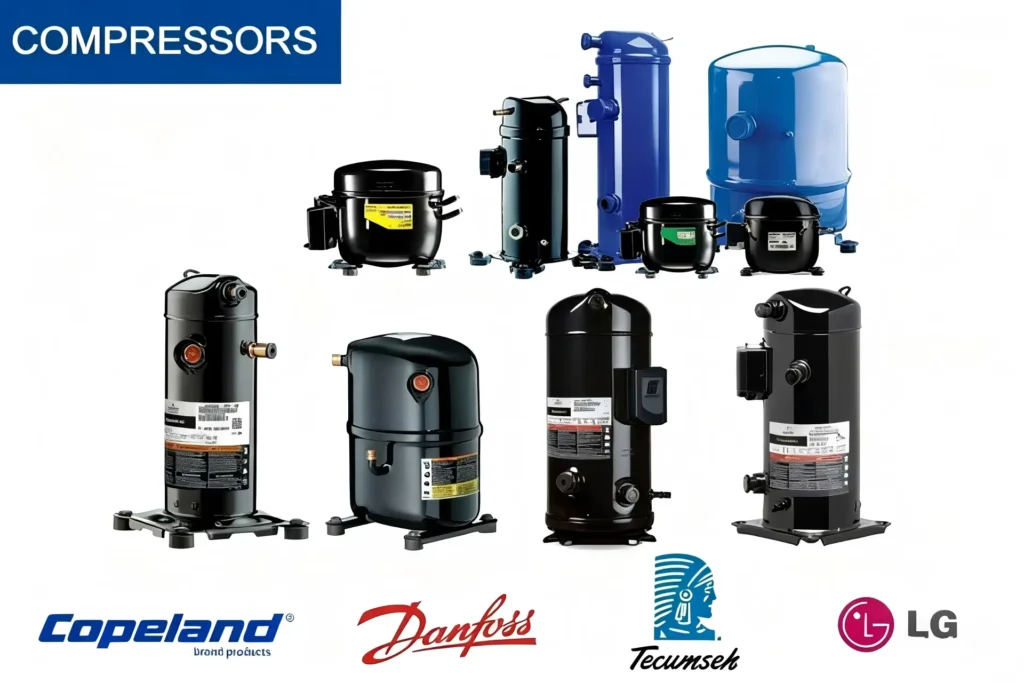
5. Choose Motor Types – DC vs AC Motors
Motors can be categorized into DC motors and AC motors, based on different energy form they generate. DC motors operate on a direct current power supply and have better speed control capabilities. AC motors operate on an alternating current power supply and have higher efficiency and power factor. AC motors are commonly used in industry.
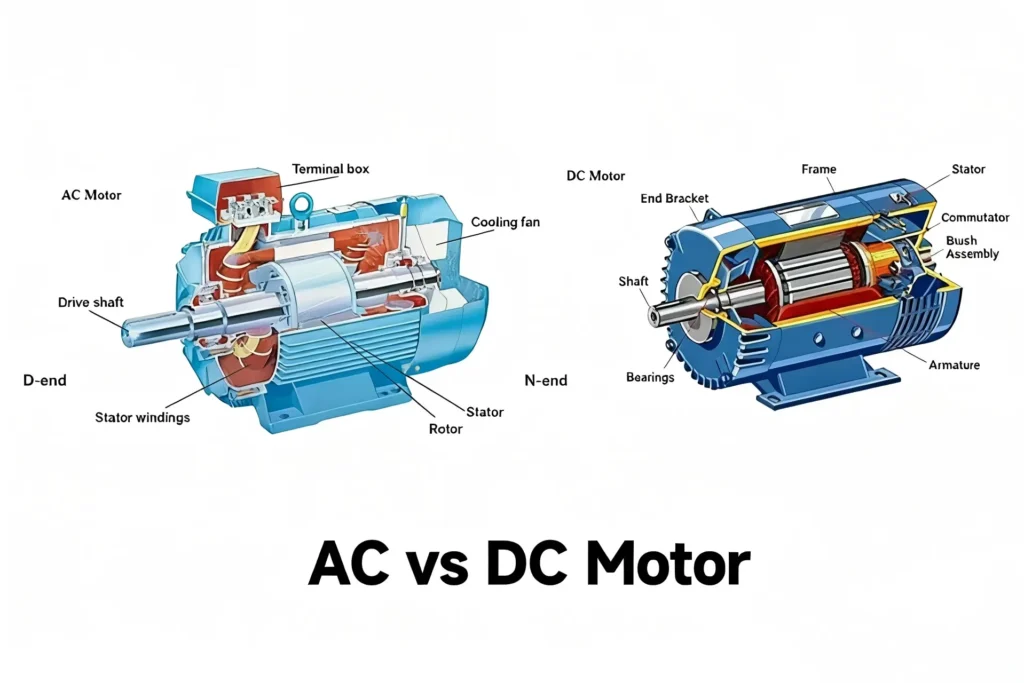
Fixed-frequency air conditioners primarily use AC motors for their compressors, while inverter air conditioners mostly use DC motors. Some inverter air conditioners also use AC motors. When purchasing, I recommend to choosing DC motors. For central air conditioners of the same power rating, a DC inverter air conditioner saves over 15% in energy, increases compressor efficiency by 10%-30%, and is quieter.
Conclusion
Choosing the right central air conditioning is not only about comfort but also about long-term value. By understanding system types, capacity, installation requirements, and energy efficiency classes, you can make a well-informed decision that balances performance, cost, and sustainability. Always prioritize models with higher energy efficiency ratings, as they deliver greater savings and reliability over time.
If you plan to install a new central air conditioning system, it is best to consult a professional supplier. George Appliance offer one-stop appliance solutions for you. Feel free to contact us anytime. With the right system in place, you can enjoy consistent cooling, lower energy bills, and lasting comfort for years to come.

